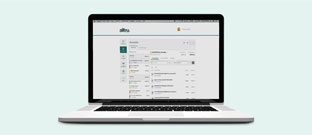When mortgage rates are low, what should you do? Here are a few of the benefits of refinancing your home to lower your monthly payment.
What is Refinancing?
Refinancing is the process of replacing an existing mortgage with a new loan. Typically, people refinance their mortgage in order to reduce their monthly payments, lower their interest rate, or change their loan program from an adjustable-rate mortgage to a fixed-rate mortgage. Mortgage refinancing requires you to qualify for the loan, just as you had to meet the lender’s requirements for the original mortgage. You file an application, go through the underwriting process and go to closing, as you did when you bought the home.
Reasons to Refinance.
- A Lower Monthly Payment – To decrease the overall payment and interest rate when rates drop, it may make sense to pay a point or two, if you plan on living in your home for the next several years. In the long run, the cost of a mortgage finance will be paid for by the monthly savings gained. On the other hand, if a borrower is planning on a move to a new home in the near future, they may not be in the home long enough to recover from a mortgage refinance and the costs associated with it. Therefore, it is important to calculate a break-even point.
- To Get Rid of Private Mortgage Insurance (PMI) – Low or zero down payment options can allow buyers to purchase a home with less than 20% down. Unfortunately, they usually require private mortgage insurance. PMI is designed to protect lenders from borrowers with a loan default risk. As the balance on a home decreases and the value of the home itself increases, borrowers may be able to cancel their PMI with a mortgage refinance loan. The lender will decide when PMI can be removed.
- To Cash Out a Portion of your Home’s Equity – Generally, most homes will increase in value, and are therefore a great resource for extra income. Increased value gives the opportunity to put some of that cash to good use, whether it goes towards purchasing a vacation property, buying a new car, paying your child’s tuition, home improvements, paying off credit cards, or simply taking a much-needed vacation.
Does it Cost to Refinance?
In general, refinancing includes some fees like an application fee, title insurance or title search fee, and depending on the lender, there might be others. Alltru mortgages have no origination fees which can save you some cash too.
Next Steps to Refinancing
First things first, once you’ve decided to refinance, it’s time to work the numbers. Using a mortgage refinance calculator can help you decide on the term (number of years) of your loan and much you’ll save. Next, you will need to reach out to the credit union and discuss all your options available to you. This will allow you to lock in your low-interest rate and get started on the closing process.
Bottom Line
Refinancing can be a great financial move if it reduces your mortgage payment, shortens your term, or helps you use the equity in your home.
Before you refinance, take a careful look at your financial situation and ask yourself:
- What is the current interest rate on a mortgage?
- How long do I plan on living in the house?
- How much money will I save by refinancing?
And remember we are here to help you along the way.

Chelsea Springli







